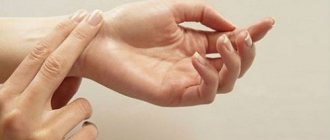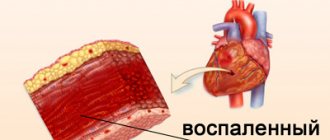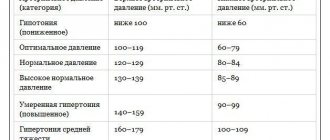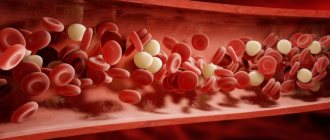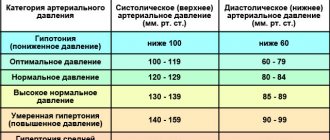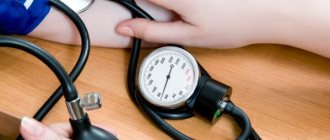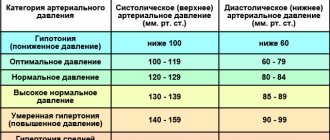What should an adult’s pulse be like: normal and pathological
What is the pulse like? What do its values depend on? Is the pulse always equal to the heart rate?
Physician, cardiologist at Clinic Expert Voronezh, Angelina Anatolyevna Kalinina, helped us find answers to these and other questions.
— Angelina Anatolyevna, what is a pulse and what does its frequency depend on?
The pulse is a rhythmic oscillation of the walls of the arteries, associated with the entry of a certain amount of blood into them during the contraction of the heart and a change in pressure.
Heart rate is affected by:
— level of physical activity (rest, exercise);
— condition of the heart muscle and valves;
- blood pressure value;
— work of the neuroendocrine system;
- level of basal metabolism (one of the criteria is body temperature).
BECAUSE THE PULSE MAY BE IRRHYTHMIC, IT IS RECOMMENDED IN ALL CASES TO COUNT IT FOR NO LESS THAN 60 SECONDS
A situational increase in heart rate is possible when taking certain substances (both medicinal and toxic), and this also happens in a person in a positive and negative emotional state (joy, fear, anger, etc.).
— How to measure the pulse correctly?
Mainly by palpation (feeling) of the vessel. The pulse can be counted in the radial, carotid, temporal, and femoral arteries. But in practice, the radial artery is most often used.
The wrist of one hand or another is covered with the fingers in the area of the wrist joint, the artery is felt, pressed with 2-3 fingers, and the pulse is counted.
Read the material on the topic: What should a child’s blood pressure be?
Usually the pulse is counted for 1 minute. In the literature you can find measurement methods where the pulse is calculated for 15 seconds and then multiplied by 4, or for 30 seconds and then multiplied by 2. However, due to the fact that the pulse can be irregular, it is recommended in all cases to count it at least than within 60 seconds.
— In Chinese medicine, there is a diagnostic method based on the pulse. In fact, what can the pulse tell you?
Indirectly, the pulse can be used to judge the heart rhythm (and its disturbance), the state of the myocardium, heart valves, blood vessels and vascular wall, the level of basal metabolism, the functioning of the autonomic nervous system, and the emotional state of a person.
Read material on the topic: Heart, why don’t you want peace? What causes tachycardia?
— What should be the normal heart rate of an adult?
According to various sources, normal levels in adults range from 60-80, 60-90 beats per minute. The number of pulse beats is equal to the heart rate (HR), i.e. Normally, there should be no so-called pulse deficit (a situation when its frequency is less than heart rate. This occurs, for example, with atrial fibrillation). In addition, the normal pulse is rhythmic, symmetrical, with satisfactory filling and tension.
— What affects a person’s pulse? What factors does it depend on?
There are several factors. The symmetry of the pulse is affected by a decrease in the lumen of one of the arteries, its incorrect location (the radial one itself, or the overlying ones, the radial branch of which is), compression of the artery (for example, an aortic aneurysm, a neoplasm, enlarged lymph nodes).
NORMALLY IN ADULTS, THE PULSE VALUES WITHIN 60-80, 60-90 BLOCKS PER MINUTE
Pulse is also influenced by heart rate; the adequacy of the contractility of the heart and the amount of blood ejected into the aorta during contraction of the left ventricle; condition of the artery wall; operation of the valve apparatus.
- For what reasons can the pulse decrease?
If this means a decrease in heart rate, then normally this is possible during intense sports training, in a state of sleep.
A rarer, slower pulse, as an indicator of pathology, may occur with certain disorders of the rhythm and conductivity of the heart, aortic valve stenosis, a disorder of the autonomic nervous system, poisoning, and certain infectious diseases (typhoid fever, brucellosis).
Read the material on the topic: Is there a diagnosis of vegetative-vascular dystonia?
Taking certain medications (beta blockers, antiarrhythmic drugs) can reduce your heart rate.
- If the pulse is low, does this mean that the person has low blood pressure?
If by low heart rate we mean rare, then such a relationship does not always happen. There are situations when the pulse is low and the blood pressure is high.
Read the material on the topic: For what reasons can blood pressure be low?
— Under what conditions can the pulse be high?
If a high pulse is understood as its increase, then the cause may be physical activity, stress, consumption of caffeine-containing drinks, or a number of medications (for example, aminophylline, nifedipine, cordiamine, salbutamol, atropine).
A frequent pulse can occur in various pathologies: diseases of the cardiovascular system (rhythm and conduction disorders; damage to the myocardium and pericardium, valvular apparatus; heart failure), dysfunction of the autonomic nervous system with a predominance of the influence of its sympathetic department, most infectious diseases, diseases of the endocrine system ( thyrotoxicosis), bleeding from the gastrointestinal tract, pulmonary edema, pulmonary embolism, shock and a number of others.
— Angelina Anatolyevna, is a high pulse always accompanied by an increase in blood pressure or is this not necessary?
No, this doesn't always happen.
Read related material: The Ultimate Guide to High Blood Pressure: Frequently Asked Questions
— What heart rate indicators require urgent medical attention?
Pulse parameters in themselves are not always a reason to urgently consult a doctor. However, if a decrease or increase in heart rate is accompanied by any symptoms (for example, with a low pulse, dizziness and loss of consciousness are noted), then you should immediately consult a doctor.
— How to provide first aid at home to a person who has a high or low pulse?
It is necessary to clarify whether such conditions have occurred before, what they were associated with, how they were tolerated; What diseases does he suffer from and have suffered in the past?
You should definitely ask about the person's medications: it is possible that he forgot to take a medicine (for example, a beta blocker), which is why his pulse quickened. Taking the drug in this case can be first aid.
AN IMMEDIATE CALL OF AN AMBULANCE IS NECESSARY IF THE CONDITION OF HIGH OR RARE PULSE HAS DEVELOPED FOR THE FIRST TIME, ESPECIALLY IF THE PERSON HAS PREVIOUSLY HAD SOME DISEASES
If you have a tonometer and thermometer, measure your blood pressure and body temperature. Reducing high numbers for both indicators can also have a positive effect on your heart rate.
In case of stress or autonomic dysfunction, it is necessary to try to calm the patient. Taking one of the drugs such as valocordin, corvalol, valerian, motherwort may help.
If the pulse is low, it is better if the person lies down. Of course, you need to lie down even if your pulse is high, if this condition is accompanied by general weakness, a feeling of lightheadedness, or dizziness.
If a low pulse is accompanied by low blood pressure, you can drink tea or coffee.
If there are no positive changes, you must call an ambulance. In addition, an immediate call is also needed in the case of an increase or decrease in heart rate that develops for the first time (and especially suddenly); progressive deterioration of health, especially in a person who has had certain diseases previously (for example, heart rhythm disturbances, myocardial infarction or stroke, gastrointestinal bleeding, pulmonary edema, pulmonary embolism).
Subscribe to our materials on social networks: VKontakte, Odnoklassniki, Facebook
For reference:
Kalinina Angelina Anatolevna
In 2007 she graduated from the Voronezh State Medical Academy named after. Burdenko.
From 2007 to 2008 she completed an internship in therapy, in 2010 she underwent professional retraining in the specialty “General Medical Practice (Family Medicine)”, and in 2017 – in the specialty “Cardiology”.
Since 2015, he has been working as a general practitioner, and since 2021, as a cardiologist at Clinic Expert Voronezh. Reception is conducted at the address: st. Pushkinskaya, 11.
Heart rate norms for sports
August 17, 2016
Pulse is important not only for the average person, but also for those who play sports. How does it affect the training process, and what heart rate standards are there (if any) for representatives of different sports?
Modern sports are not what they used to be. Moreover, development is moving towards positive changes, adapting to modern trends and genetic changes in people’s bodies. Compare, for example, boxing before and now. Everything has changed: technique, speed, and rules. Of course, the basic elements remained unchanged, but still a lot has changed. Every year the popularization of a healthy lifestyle among the population is growing and, consequently, the number of people involved in sports is increasing. Even if they do it at an amateur level. This is also due to the fact that now it is not necessary to have a medical education and work in a clinic, surrounded by various devices, in order to carefully monitor your health. Scientific and technological progress has taken a very big step forward over the past three decades. Now you can do a lot of simple, everyday research without leaving your home. Of course, doctors are increasingly placing various sensors on professional athletes during training, but this has transferred to amateur sports in a much simpler and more accessible form. For example, a watch has long ceased to be an accessory that simply shows the time. At the moment, they have become “wiser” and acquired many additional functions. The most popular is measuring changes in heart rate. Why would a person involved in sports even know this? How will this affect the training process, and what heart rate standards are there (if any) for representatives of different areas of sports culture? Now let's figure it all out. Pulse is an important part when assessing the effectiveness of training. By knowing your heart rate, you can approach your workouts more consciously, knowing where you can increase the load and when you need to slightly reduce the intensity of the workout. However, first you need to understand what affects the pulse?
- Physical state. The better trained you are, the fewer contractions your heart needs to make.
- Human weight. With greater body weight, the heart has to work harder.
- Smoking, along with alcohol, makes our heart work harder.
- Our psycho-emotional state. Emotions and the functioning of the body are closely related - for example, when we are angry, our heart beats faster.
- Temperature. The colder it is, the lower the contraction rate.
Under different loads, a person's heart rate will change differently. So, for example, for those who began to engage in a sport where endurance is required, the average resting heart rate will be about 50 beats per minute for people 22-25 years old. While for those who train in speed-strength sports, this value is equal to 57-61 beats per minute. For beginner athletes, this value is even slightly higher - approximately 65 strokes.
Why is it even necessary to know your pulse during sports? For example, to accurately understand that you are training to the best of your real capabilities and are not “freeloading”, justifying yourself with fatigue. Pulse is an excellent assistant in determining your own load in order to work out really effectively, without overworking yourself too much and without slacking off at the same time. To determine your heart rate during training, you must first find out your maximum threshold. For men it is calculated according to the formula: 220 minus age, and for women - 226 minus age. For example, for a 25-year-old guy, the maximum heart rate (heart rate) is 195 beats per minute.
A couple more useful numbers and formulas:
When warming up, the heart rate should not exceed 50-60%
from the maximum value.
Thus, based on the average indicators, you can start training with a heart rate from 97.5 to 117
(calculated using the formula 195 * 0.5 = 97.5).
During cardio training, heart rate should not exceed 60-70%
of the maximum.
When running, this value increases to 70-80%
.
By the way, during long workouts it is especially important to monitor your heart rate so that it does not go into the so-called “red zone,” which is 90-95%
of the maximum value.
You should start playing sports wisely, choosing suitable shoes and clothes, developing a training system and monitoring your condition.
Only with a responsible approach can a person achieve truly good results and maximize their physical fitness. Tags:
- Sport
- Pulse
To leave a comment you must be an authorized user
